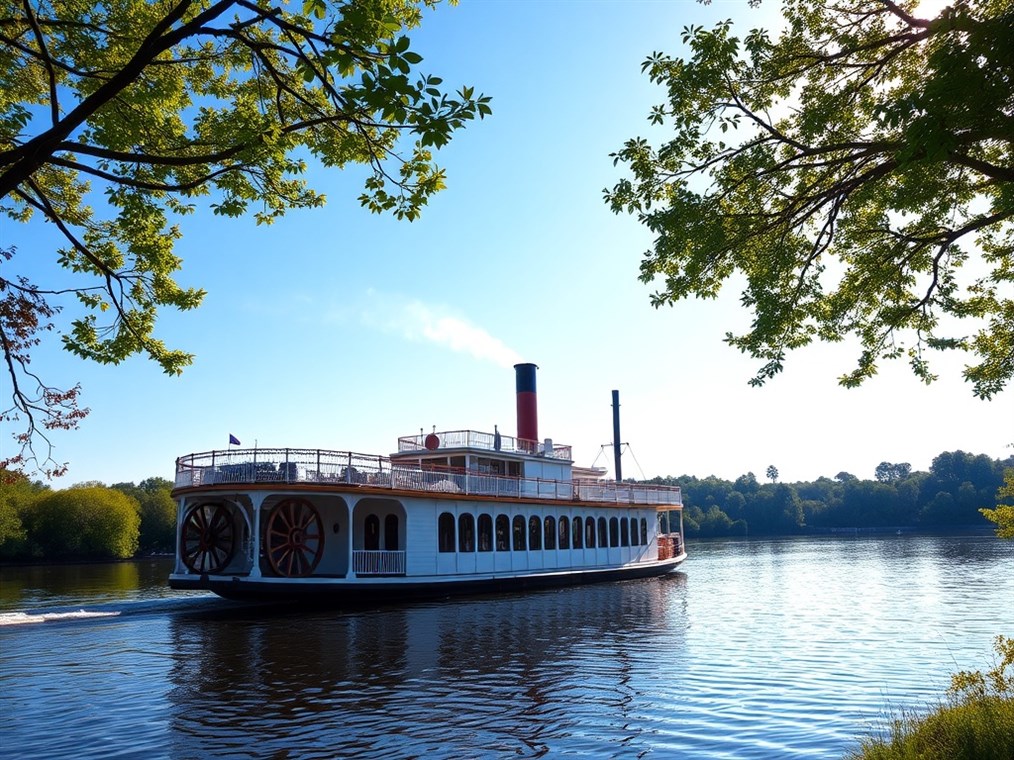
The Humble Paddle Steamer: More Than Just a Pretty Wheel
FactsThe Humble Paddle Steamer: More Than Just a Pretty Wheel
Paddle steamers, those charming relics of a bygone era with their distinctive churning wheels, weren’t just picturesque additions to the waterways. They were the workhorses of the 19th and early 20th centuries, playing a surprisingly vital role in everything from trade to tourism, and even warfare. Sure, the propeller eventually stole the show, especially when the seas got rough, but these paddle-powered boats left an impact that’s hard to forget.
So, what exactly did these versatile vessels do? Well, quite a lot, actually.
First and foremost, they were the kings and queens of river and coastal transport. Think of them as the delivery trucks and buses of their day, chugging along rivers and hugging coastlines. Their shallow design meant they could navigate waters that bigger ships couldn’t even dream of, making them perfect for connecting communities and hauling goods. Take the River Murray in Australia, for example. From the 1860s, paddle steamers were the lifeblood of those early settlements, bringing in everything from food to furniture and carrying wool and wheat back to market. And who could forget the mighty Mississippi? Paddle steamers practically built the economies of those bustling port cities along its banks.
But it wasn’t all work and no play. Tourism and leisurely excursions were also big on the agenda. Imagine gliding along a scenic river, the rhythmic splash of the paddle wheel your soundtrack. These steamers offered folks a chance to escape the everyday, soak in the views, and maybe even catch a sea breeze. Speaking of which, the PS Waverley is still afloat and kicking! Built way back in 1946, she’s the last seagoing passenger paddle steamer in the world, still taking folks on unforgettable trips around the British coast.
Now, here’s a twist you might not expect: paddle steamers at war. Believe it or not, these boats were often pressed into military service. Their spacious decks made them ideal for handling minesweeping gear, and their shallow draught meant they could operate close to shore. During both World Wars, the Royal Navy snapped up pleasure steamers and put them to work. They even played a heroic role in the Dunkirk evacuation, ferrying troops to safety under heavy fire. Talk about a makeover!
And the surprises don’t stop there. Paddle steamers were also used for some pretty specialized gigs. Floating churches bringing sermons to remote communities? Check. Fishing boats hauling in the day’s catch? Absolutely. Even showboats bringing music and entertainment to river towns? You bet! The PS Etona, for instance, spent years as a floating church in South Australia, bringing solace and services to folks who lived along the river.
Of course, not all paddle steamers were created equal. You had your side-wheelers, the showboats of the ocean, strutting their stuff on coastal routes. Then you had your stern-wheelers, the nimble river rats, perfectly suited for navigating those shallow, winding waterways. And let’s not forget the rare inboard paddlewheelers, a quirky bunch with their wheels tucked away inside the hull.
Sadly, the paddle steamer’s reign couldn’t last forever. The propeller came along and, well, it was a game-changer. More efficient, especially in rough seas, the propeller gradually pushed the paddle steamer into retirement. But don’t think they’re gone for good! Many have been lovingly preserved, serving as tourist attractions, floating restaurants, or historical monuments. They remind us of a time when life moved at a different pace, and the rhythmic churn of a paddle wheel was the soundtrack of progress.
And speaking of reminders, let’s give a shout-out to some of the most memorable paddle steamers: the Clermont, Robert Fulton’s groundbreaking creation; the PS Comet, Europe’s first commercial passenger service; the SS Savannah, the first paddle steamer to brave a transatlantic voyage; the aforementioned PS Waverley, still going strong; and the Paddle Steamer Enterprise, which worked as a cargo boat, fishing vessel, houseboat and showboat!
So, the next time you see a picture of a paddle steamer, remember it’s more than just a pretty face. It’s a symbol of innovation, versatility, and a time when these humble vessels helped shape the world we live in.
You may also like
Disclaimer
Categories
- Climate & Climate Zones
- Data & Analysis
- Earth Science
- Energy & Resources
- Facts
- General Knowledge & Education
- Geology & Landform
- Hiking & Activities
- Historical Aspects
- Human Impact
- Modeling & Prediction
- Natural Environments
- Outdoor Gear
- Polar & Ice Regions
- Regional Specifics
- Review
- Safety & Hazards
- Software & Programming
- Space & Navigation
- Storage
- Water Bodies
- Weather & Forecasts
- Wildlife & Biology
New Posts
- Diving Deep into Tangerine: More Than Just a Sunny Locale
- Jamaica Backpack Daypack Pockets Shopping – Review
- TEOYETTSF Climbing Backpack Multifunction Military – Buying Guide
- The Curious Case of Cavendish’s Classroom: Where Did This Science Star Study?
- Dragon Backpack Insulated Shoulder Daypack – Buying Guide
- ROCKY Hi-Wire Western Boots: A Rugged Review After a Month on the Ranch
- Vertical Curbs: More Than Just Concrete Barriers
- Regatta Modern Mens Amble Boots – Honest Review
- YMGSCC Microfiber Leather Sandals: Beach to Boardwalk, Did They Hold Up?
- Tangier: More Than Just a Backdrop in “Tangerine”
- DJUETRUI Water Shoes: Dive In or Doggy Paddle? A Hands-On Review
- Barefoot Yellow Pattern Hiking 12women – Is It Worth Buying?
- Koa Trees: How Fast Do These Hawaiian Giants Really Grow?
- DDTKLSNV Bucket Hat: Is This Packable Sun Shield Worth the Hype?